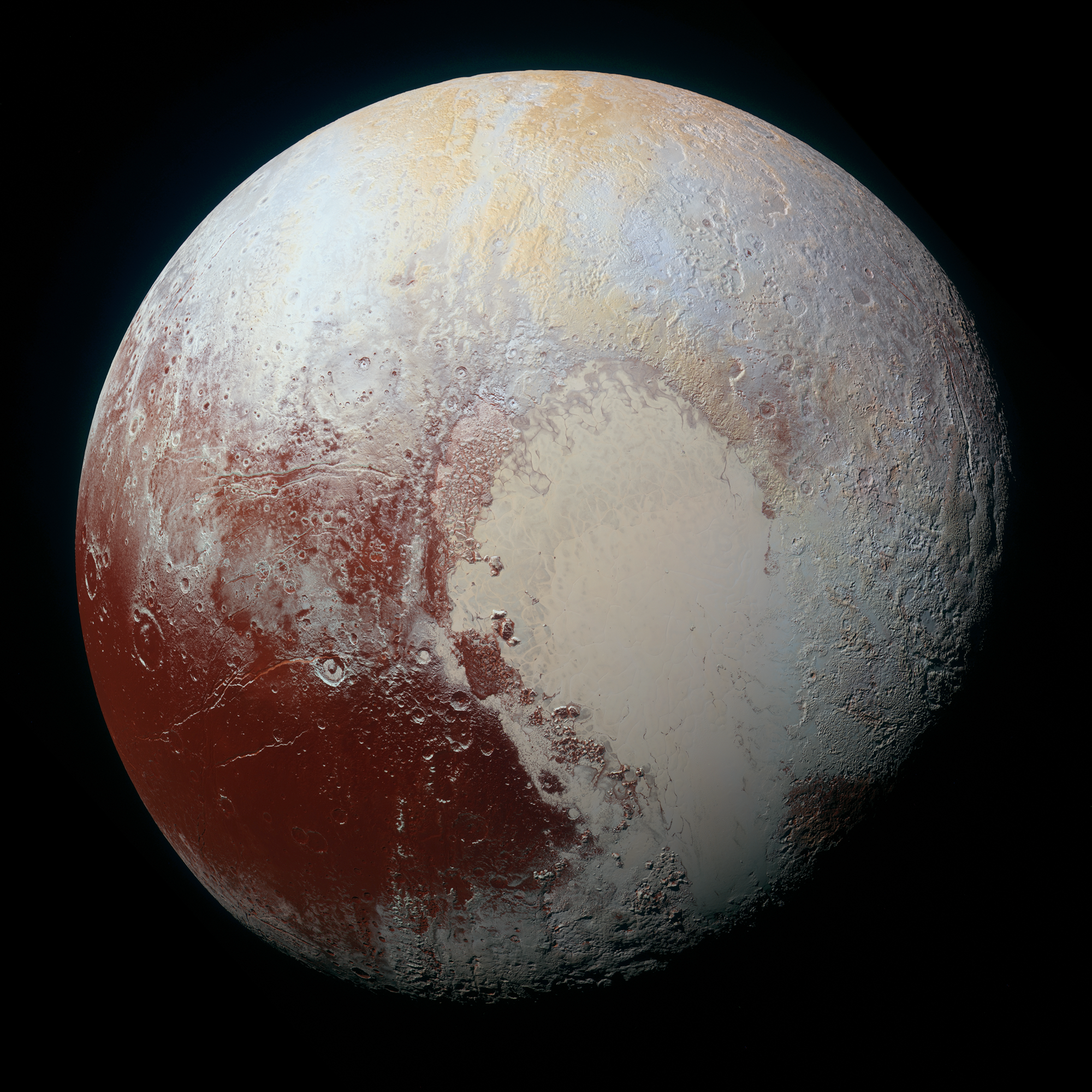
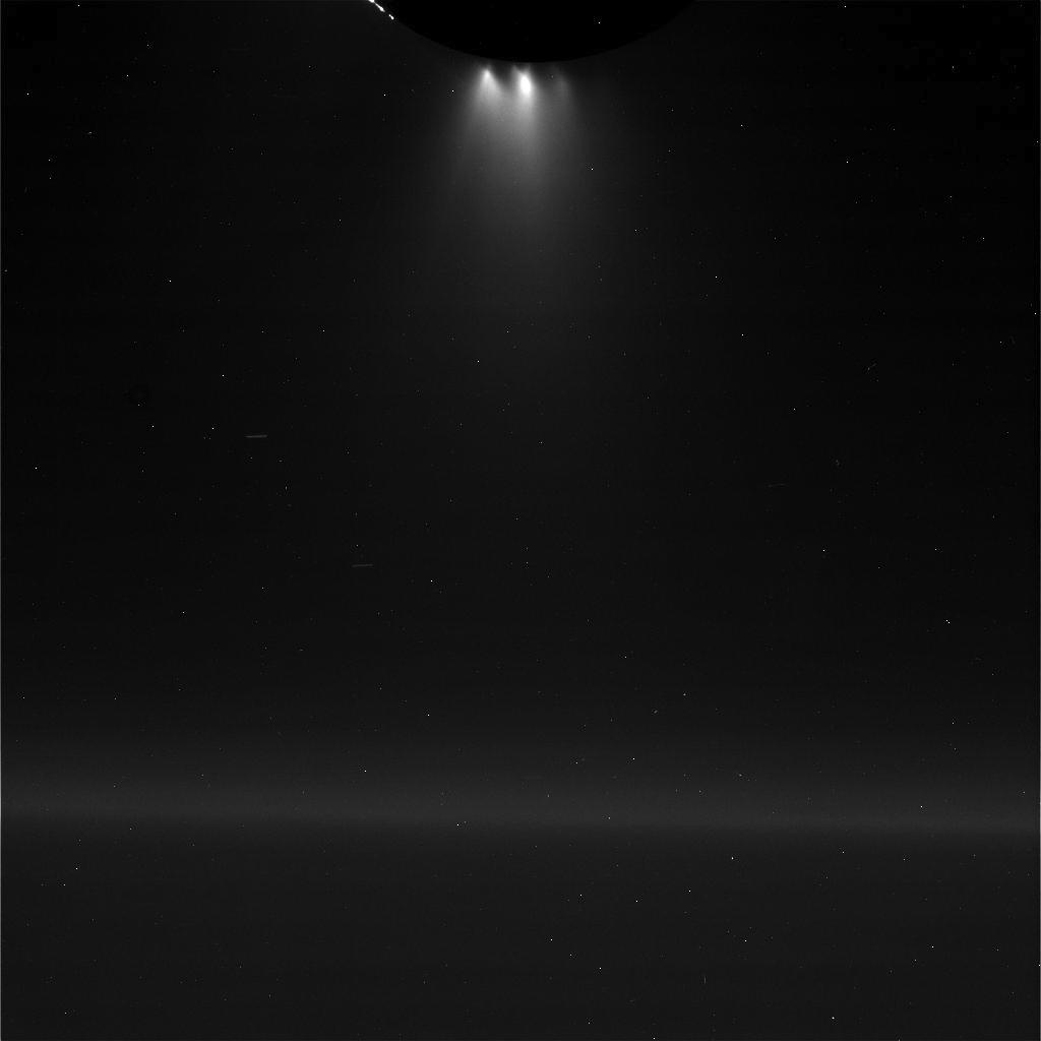
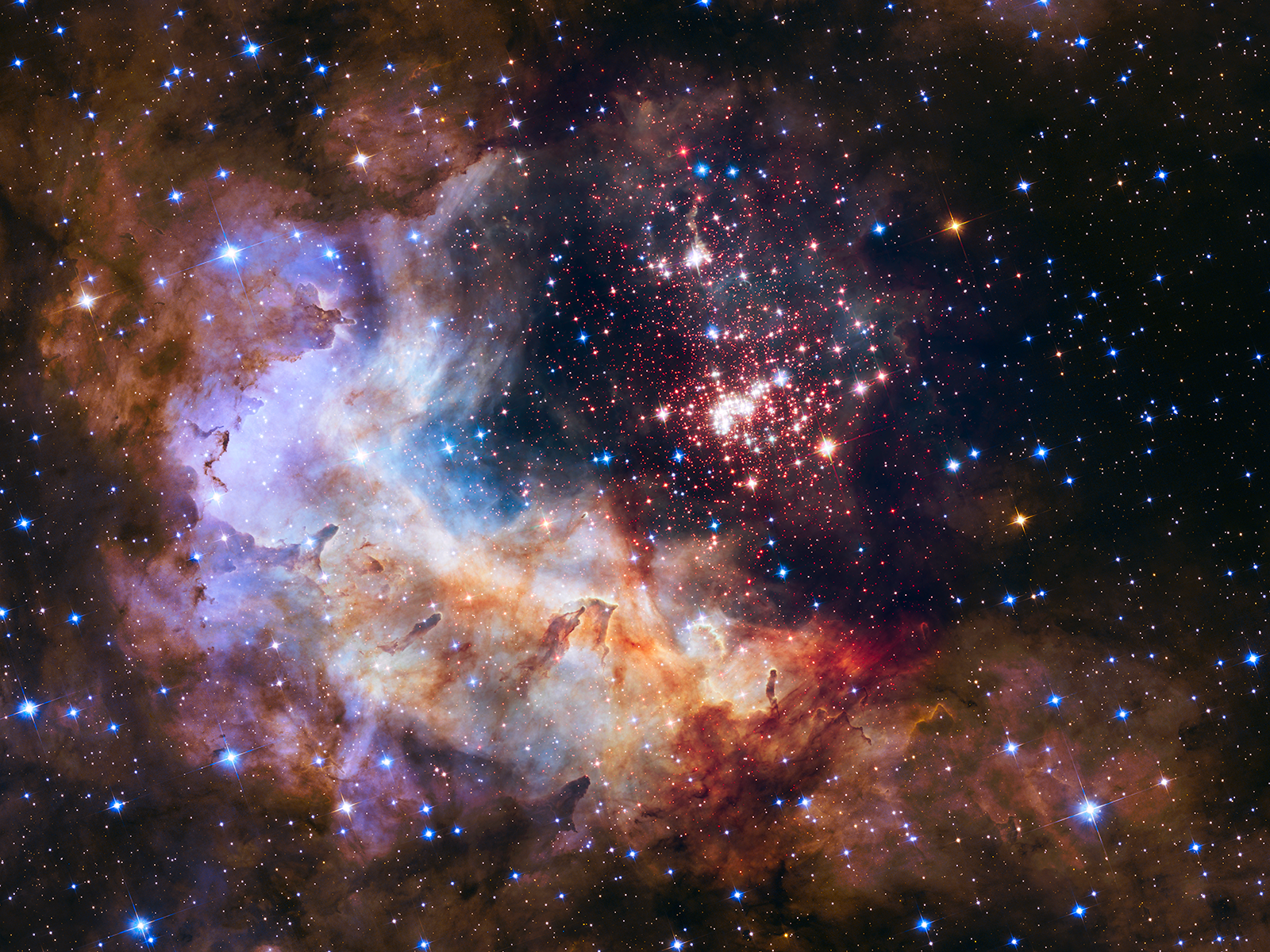
RELEASE: 15-232
In 2015, NASA explored the expanse of our solar system and beyond, and the complex processes of our home planet, while also advancing the technologies for our journey to Mars, and new aviation systems as the agency reached new milestones aboard the International Space Station.
“It was a fantastic year that brought us even closer to Mars,” said NASA Administrator Charles Bolden. “Our space program welcomed advances from commercial partners who will soon launch astronauts from the United States to the International Space Station, and progress on new technologies and missions to take us into deep space, improve aviation and explore our universe and home planet.”
Solar System & Beyond
NASA is exploring our solar system and beyond to unravel the mysteries of our universe. After a decade-long journey, the agency’s New Horizons spacecraft completed a historic flyby of Pluto in July, making it the first-ever space mission to explore a world so far from Earth. New Horizons captured never-before-seen views of the distant dwarf planet and its moons, and collected data that will keep scientists busy for years to come, returning the data and images to Earth using NASA’s Space Network.
NASA’s Dawn spacecraft made history in March with another dwarf planet, Ceres, when it became the first spacecraft to orbit such a celestial body.
In October, NASA’s Cassini spacecraft made the closest-ever flyby of Saturn’s moon Enceladus — capturing valuable scientific data from the plume of icy spray coming from the moon’s subsurface ocean.
In the search for a twin of our home world, NASA’s Kepler spacecraft confirmed in July the first near-Earth-size planet in the habitable zone around a sun-like star 1,400 light-years away.
Back on Earth, NASA managers working the early stages of the agency’s Europa mission selected nine science instruments to investigate whether Jupiter’s mysterious icy moon could harbor conditions suitable for life.
The first of 18 flight mirrors for NASA’s James Webb Space Telescope were installed in November, beginning a critical piece of the observatory’s construction ahead of its 2018 launch.
In April, NASA’s Hubble Space Telescope, a Great Observatory that forever transformed our understanding of the universe, celebrated 25 years of scientific discovery. After its last astronaut servicing mission in 2009, Hubble is better than ever and expected to continue to provide valuable data into the next decade.
The agency’s Solar & Heliospheric Observatory (SOHO) celebrated its 20th anniversary as the longest-running solar observatory, as well as the discovery of its 3,000th comet, the study of which can shed light on how our solar system was formed.
In March, the four Magnetospheric Multiscale spacecraft were launched and positioned in Earth’s orbit to study magnetic reconnection, the interaction between our sun and Earth’s magnetic field that can disrupt modern technological systems such as communications networks, GPS navigation, and electrical power grids.
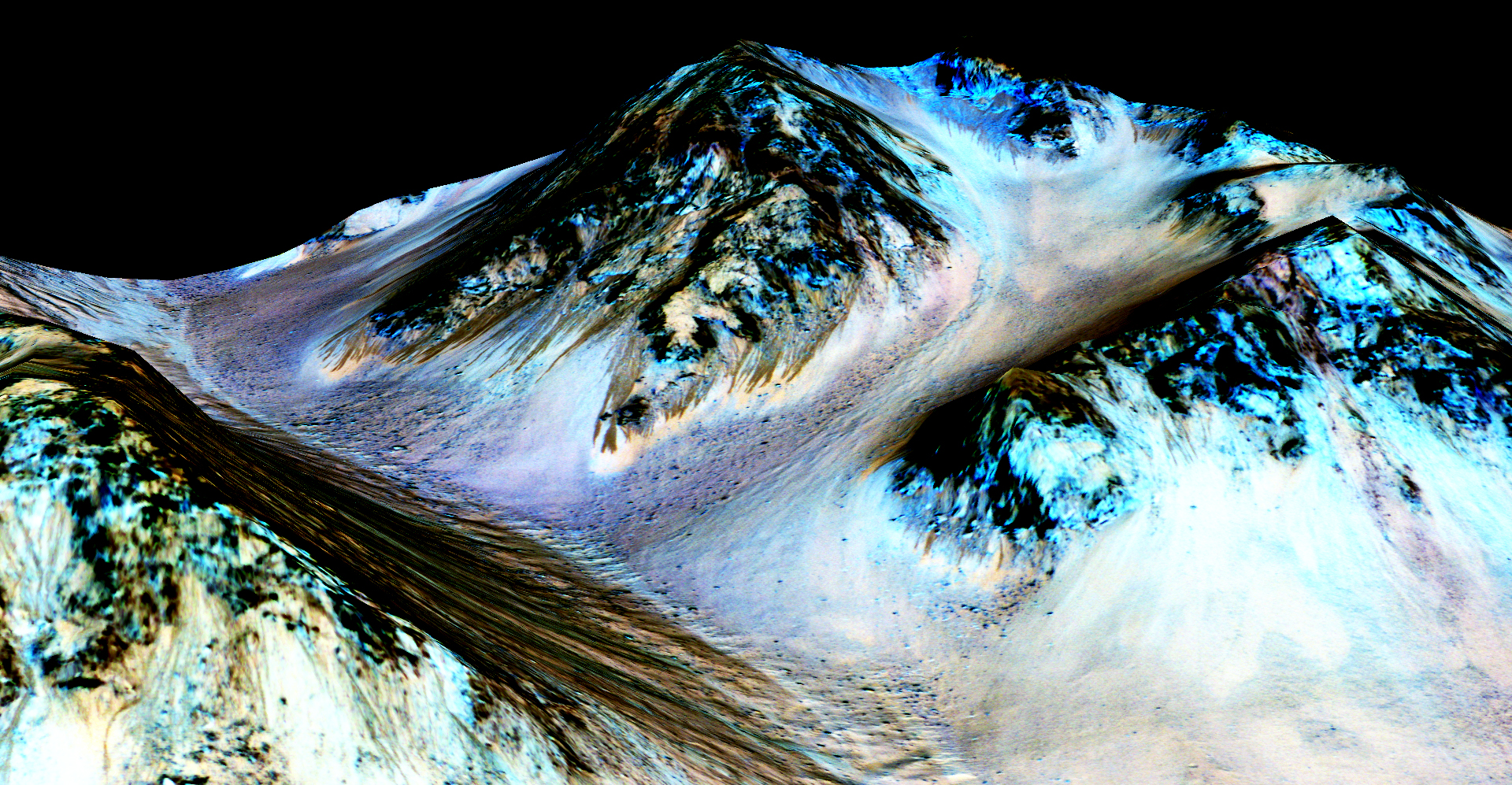
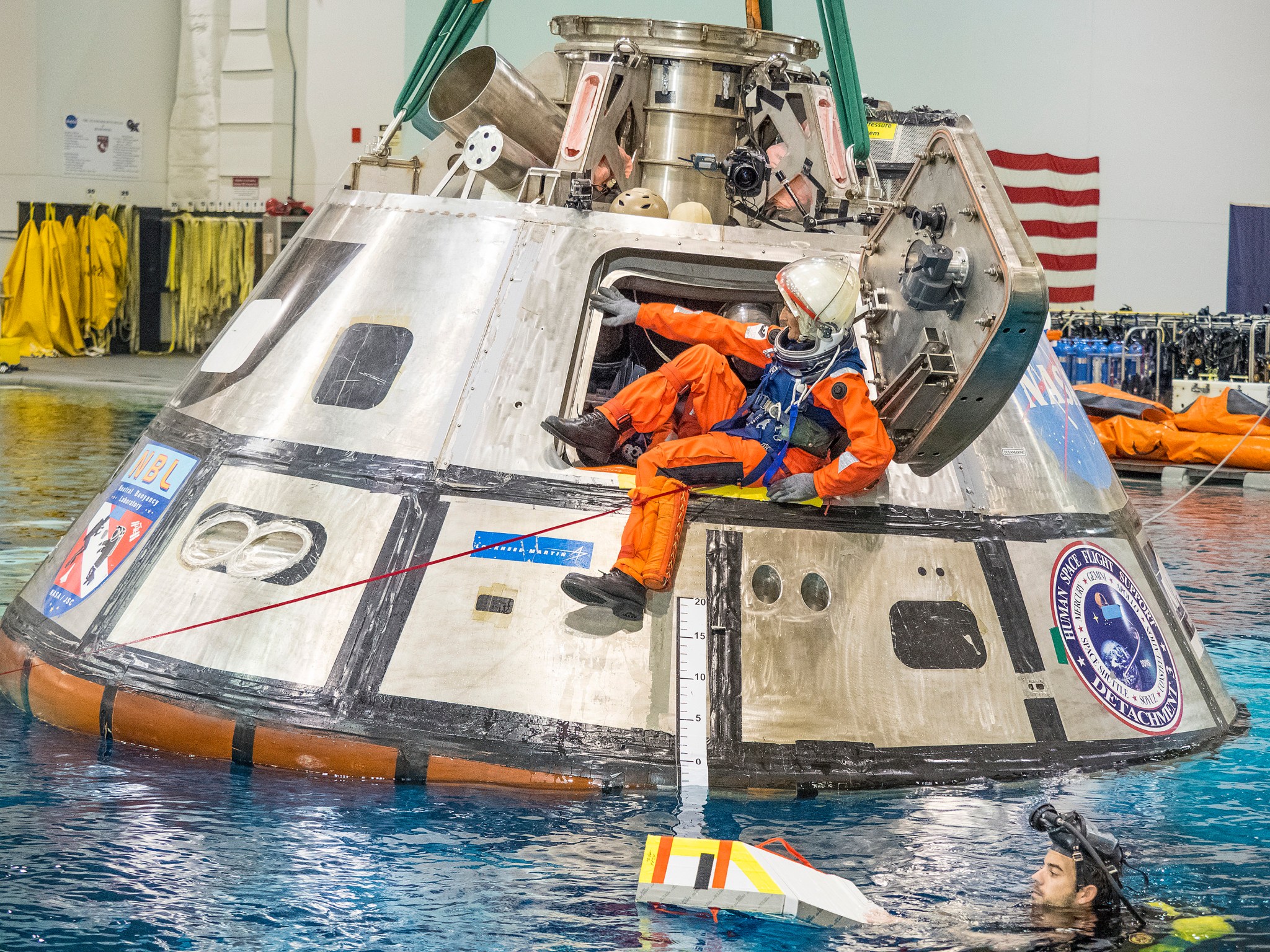
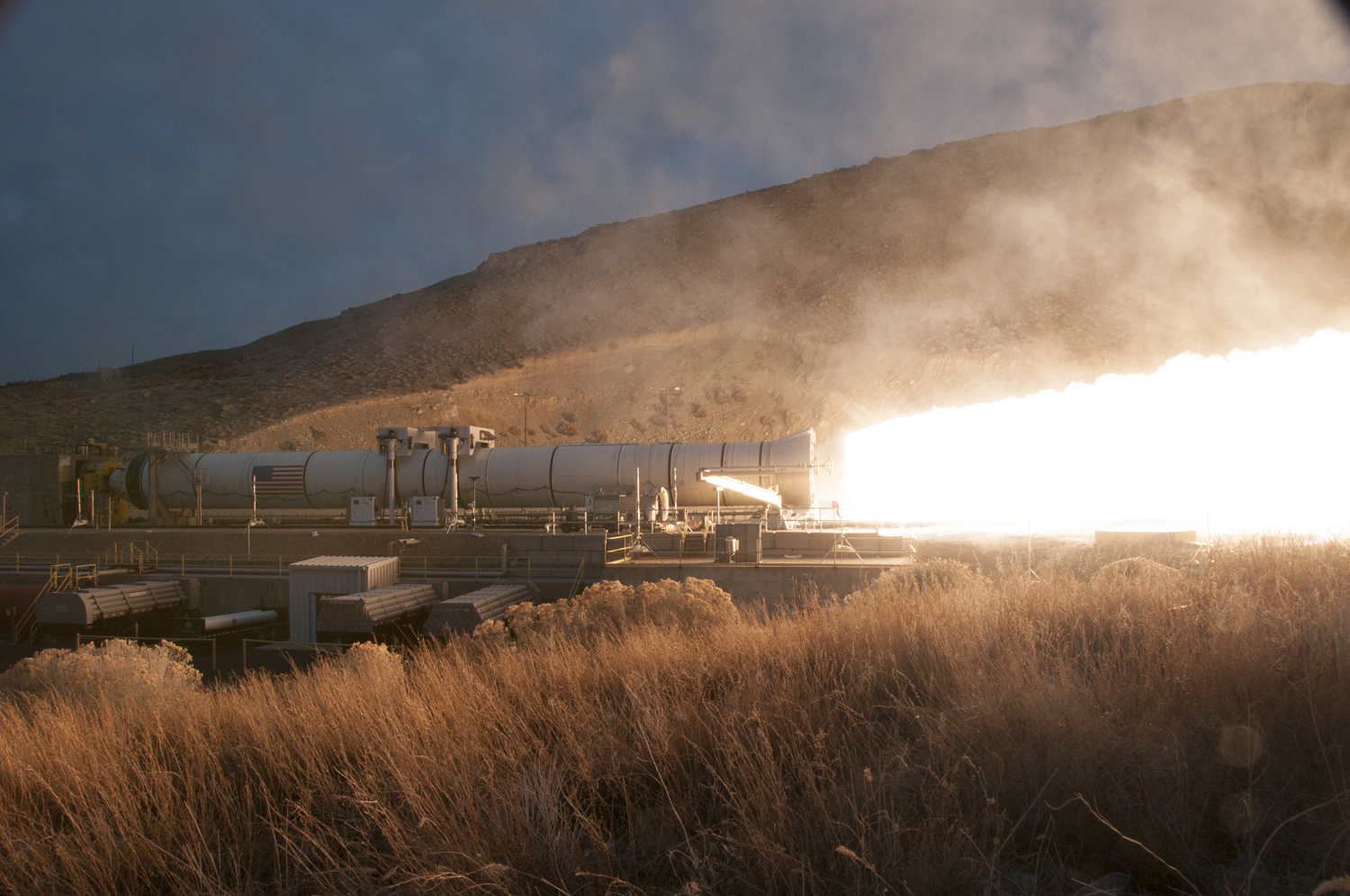
Journey to Mars
NASA’s journey to Mars was advanced in 2015 by valuable science findings from current missions traversing and orbiting the Red Planet. In September, NASA announced its Mars Reconnaissance Orbiter provided the strongest evidence yet that liquid water flows intermittently on present-day Mars.
NASA’s Mars Atmosphere and Volatile Evolution (MAVEN) mission identified the process that appears to have played a key role in the transition of the Martian climate from an early, warm and wet environment that might have supported surface life to the cold, arid planet Mars is today. MAVEN findings also showed how space weather near Mars affected its potential to support life.
The Opportunity and Curiosity rovers continued to explore the surface of the Red Planet this year, with data from Curiosity showing signs of a form of nitrogen — further evidence that conditions on ancient Mars may have been able to support life
Development of the core capabilities required to send astronauts to Mars in the 2030s continued this year with significant progress on NASA’s Orion crewed spacecraft, Space Launch System (SLS) rocket, Asteroid Redirect Mission, and revitalized space launch complex at the agency’s Kennedy Space Center in Florida. And in October, NASA held its first workshop to brainstorm with the science community to identify the best Martian landing sites for astronauts to carry out scientific exploration.
In 2015, the agency moved ahead toward the first integrated Orion and SLS flight test, designated Exploration Mission 1. In a report released in October, NASA’s Journey to Mars: Pioneering Next Steps in Space Exploration, the agency provided a detailed outline of its plan to send the first humans to the Red Planet.
Building on the success of Orion’s first flight test in 2014, agency officials completed their rigorous technical and programmatic review of Orion to establish NASA’s commitment to the program’s technical, cost and schedule baseline.
In March, Orion’s Launch Abort System (LAS) was tested to prove it can survive the intense temperatures, pressures, noise and vibrations experienced during a launch emergency and get the crew to safety. The spacecraft’s heat shield arrived in June at NASA’s Langley Research Center in Hampton, Virginia, where it will be readied for water-impact tests in 2016.
Technicians at Michoud also have begun welding the primary structure of Orion’s crew module and joined the middle part of the spacecraft to the bottom portion of the crew module, and expect to finish welding in early 2016. Engineers at NASA’s Marshall Space Flight Center in Huntsville, Alabama, analyzed core samples from Orion’s heat shield, which was used in the 2014 spaceflight test, to better understand its performance and to provide improvements in thermal protection models, as the agency continues to refine Orion’s overall design and reduce its mass.
NASA received in November a full-size test version of the Orion European Service Module provided by ESA (European Space Agency), which is being prepared for testing early next year at the Plum Brook Station test facilities in Sandusky, Ohio.
Progress also continues on SLS — the world’s most powerful rocket. The booster and engines that will propel SLS and the Orion spacecraft to space passed significant tests this year. The upgraded rocket booster passed a major ground test in March after firing for two minutes, the amount of time it will fire when it lifts SLS off the launch pad. Engineers will conduct a second and final qualification booster firing test in 2016. In August, NASA completed the first series of tests for the upgraded developmental RS-25 engines on the A-1 test stand at NASA’s Stennis Space Center near Bay St. Louis, Mississippi. Preparations will continue in 2016 as the flight engines that will power SLS on missions into deep space will be tested for flight.
For the first time in almost 40 years, a NASA human-rated rocket completed all steps needed to clear a critical design review while the hardware is being built: a structural test article of the rocket’s propulsion system was finished and numerous other flight and qualification hardware were completed and are ready for welding.
Work also began on infrastructure projects supporting SLS and Orion. Construction began in May on a 215-foot-tall structural test stand for SLS at Marshall. In August, NASA completed modifications to the Pegasus barge, previously used to move space shuttle hardware. For its new mission, transporting the core stage of the SLS, a 165-foot center section was added to the barge, bringing its total length from 260 feet to 310 feet.
In addition, Kennedy continued its transformation into a 21st century, multi-user spaceport for both government and commercial customers. Modifications continue on the ground structures that will launch the next generation of rockets and spacecraft. Several new work platforms that will be used to access, test and process SLS and Orion arrived on site, and the giant steel platforms are being installed in the center’s Vehicle Assembly Building.
Testing began at Kennedy on the umbilical system that provides power and ground communications between the mobile launcher tower, rocket and Orion spacecraft. Upgrades and designs in progress were reviewed to ensure they will be ready to support all system and processing requirements for the first launch of SLS and Orion.
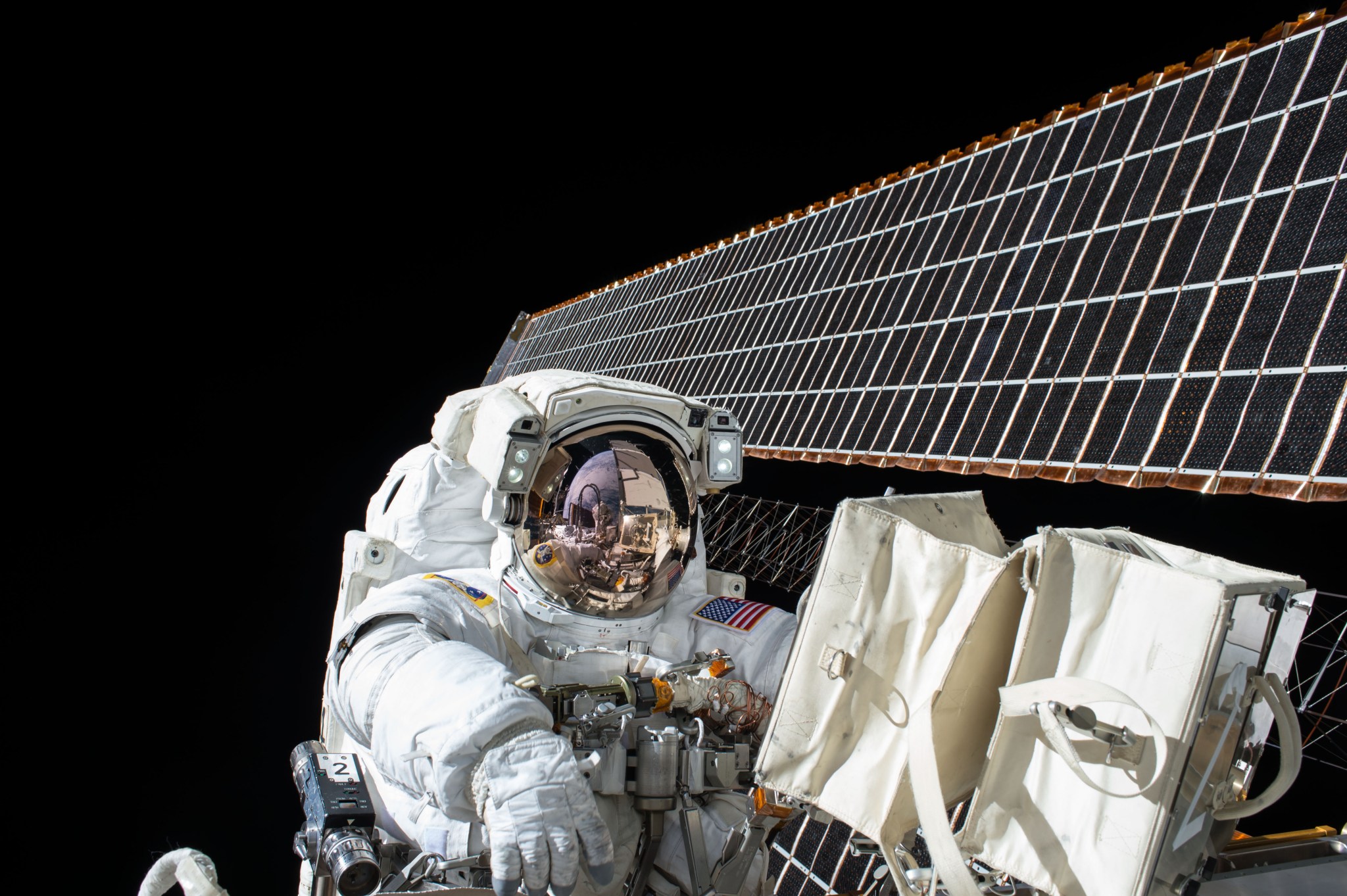
NASA’s Asteroid Redirect Mission (ARM) passed a pivotal mission milestone in the spring with the successful completion of the agency’s mission concept review. After extensive expert and public engagement forums and workshops to gather ideas on how to best meet the president’s challenge to redirect an asteroid, NASA refined its robotic capture approach that will achieve the goal of redirecting a large asteroid boulder back to a parked orbit near our moon, allowing astronauts to train and conduct sampling of the space rock.
Having an asteroid parked near the moon also will open up commercial opportunities for American companies interested in learning the challenges of mining asteroids. In October, NASA issued a call to American industry for innovative ideas on how the agency could obtain a core advanced solar electric propulsion-based spacecraft for the robotic boulder retrieval mission.
The agency also took steps to stimulate the development of deep space capabilities in the commercial aerospace sector with the selection of 12 projects on which NASA will partner to advance development of necessary exploration capabilities.
To further prepare for the journey to Mars, the eight candidates from NASA’s 2013 astronaut class received their astronaut pins in July, symbolizing the completion of their training. And in December, NASA began a search for its next group of astronaut candidates.
In October, Hollywood and NASA science and technology came to audiences around the world with the premier of “The Martian.” The agency collaborated on this journey to Mars film with 20th Century Fox Entertainment, providing guidance on production design and technical consultants. Across NASA, dozens of people already are working on many of the technologies seen in the movie that astronauts will need when they begin to explore Mars in real life.
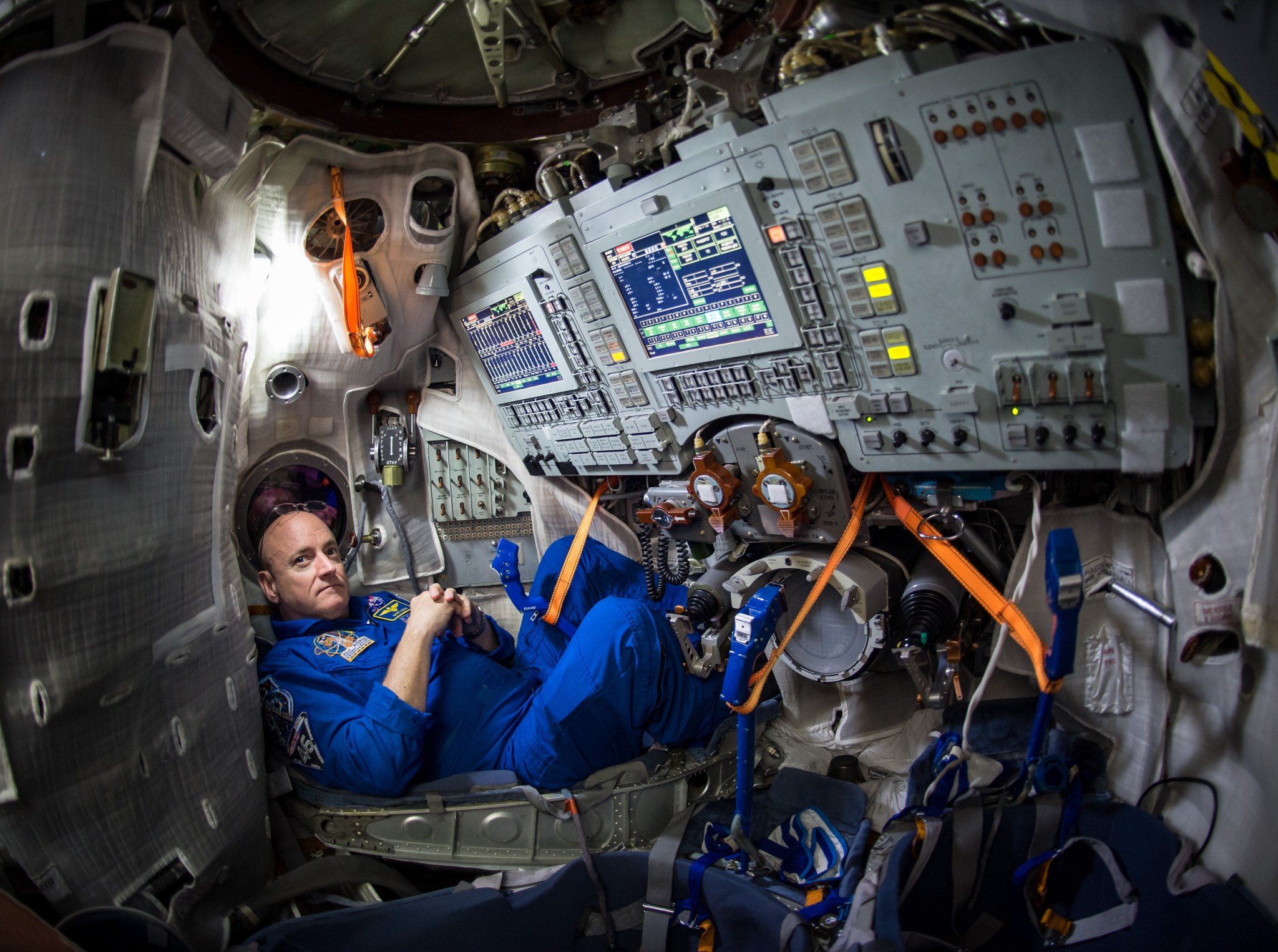
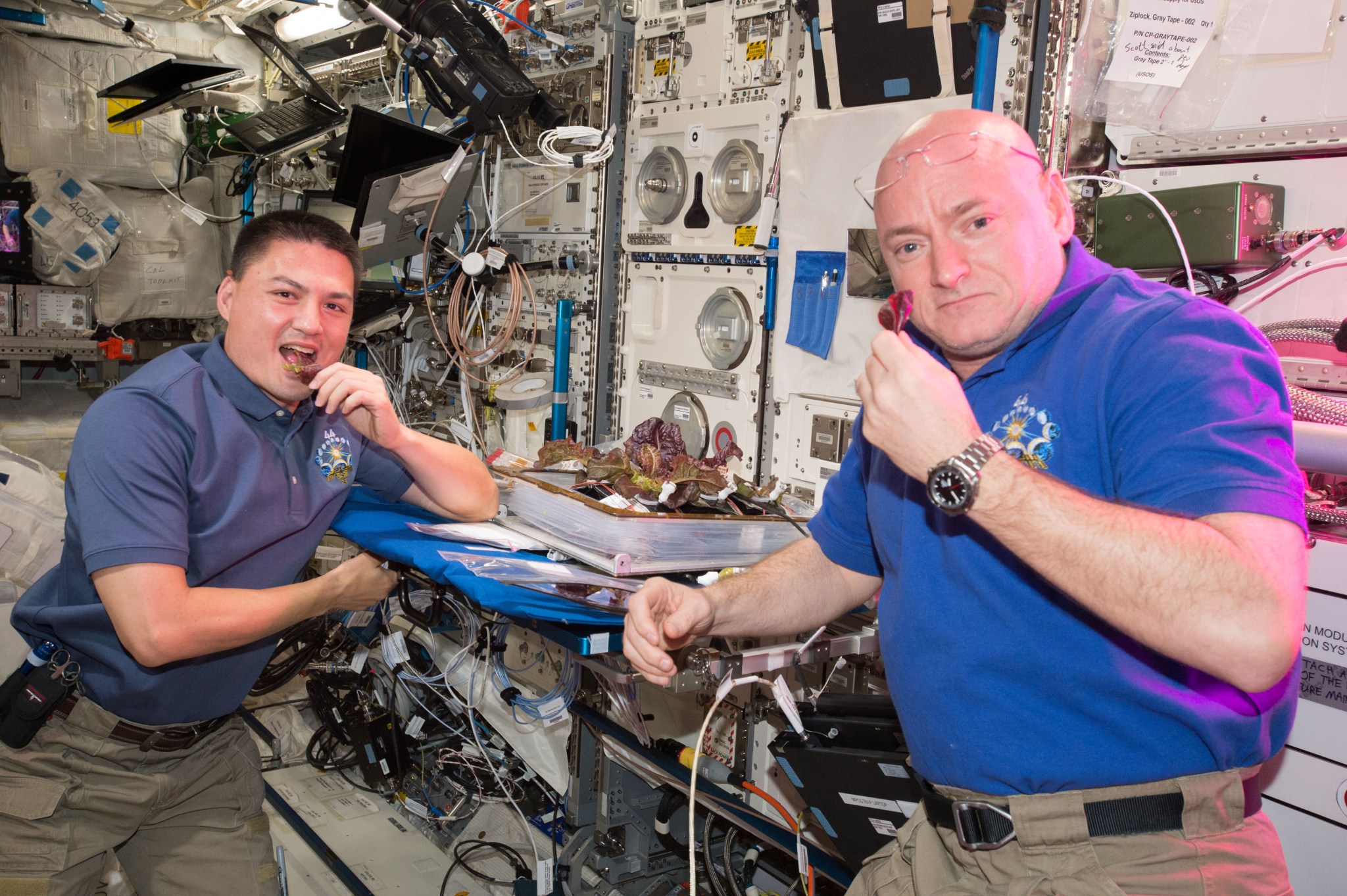
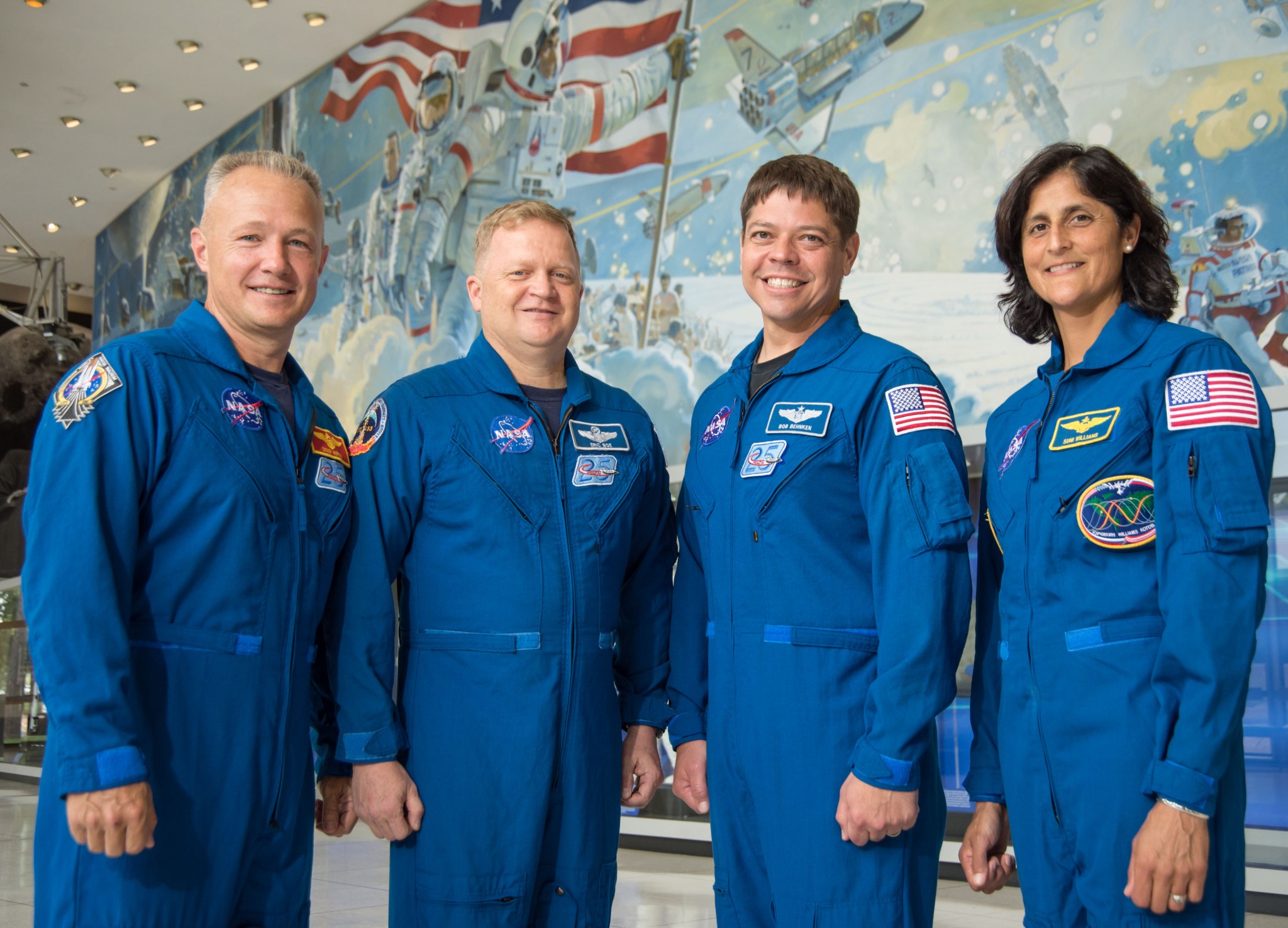
International Space Station
The International Space Station (ISS) is a critical step on the agency’s journey to Mars. 2015 marked the 15th year of continuous human presence aboard the station. Since November 2000, more than 220 people from 17 countries have visited the ISS, and the orbiting laboratory has hosted more than 1,700 research investigations from researchers in more than 80 countries.
NASA astronaut Scott Kelly kicked off a one-year mission in March living and working in space. In October, he broke records for both the most time and cumulative days in space for a NASA astronaut. While Scott is in orbit, his identical twin brother and former NASA astronaut Mark Kelly remains on Earth, and both are participating in the Twins Study. When Scott returns in 2016 and concludes post-flight tests, researchers will have important data about the medical, psychological and biomedical challenges faced by astronauts during long-duration spaceflight.
A total of 16 people lived and worked aboard the space station in 2015. Some of them sampled the first vegetables grown in space. Crew members conducted hundreds of other scientific investigations off the Earth, for the Earth.
Crew members participated in six spacewalks to maintain the space station and continue reconfiguration of ISS systems and modules to accommodate the delivery of new docking adapters, which will be used by future U.S. commercial spacecraft.
With six deliveries thus far in 2015, and a seventh set to arrive to the space station on Dec. 23, four different cargo spacecraft have provided some 30 tons of supplies and science research to the station this year. NASA’s commercial partners conducted three of those missions: SpaceX sent its Dragon spacecraft on two successful missions, and the launch of Orbital ATK’s Cygnus in December heralded a resumption of U.S. cargo resupply missions to the station after mishaps by both companies. The agency is expected to award its second commercial resupply services contract in early 2016 to ensure cargo deliveries to the station through at least 2024.
The Bigelow Expandable Activity Module (BEAM) arrived at Kennedy Space Center this year. When SpaceX’s Dragon returns to flight and brings BEAM to the station during its eighth resupply mission in 2016, the module will be berthed to the station for a two-year test and validation of technology that could help advance the agency’s long-duration human spaceflight goals.
In addition to delivering cargo to the space station, NASA’s commercial crew providers continue to meet critical development and certification milestones on their space systems that will return America’s capability to launch crew members to the station from the United States in 2017. The agency’s Commercial Crew Program ordered its first two crew rotation missions from Boeing for its Crew Space Transportation (CST)-100 Starliner and the first from SpaceX for its Crew Dragon. NASA also named four experienced astronauts and test pilots to train and prepare for these commercial spaceflights, working closely with the commercial companies to develop their systems.
In May, SpaceX successfully demonstrated how crew members would quickly and safely escape from their rocket while on the launch pad and through their ascent into orbit. The low bay of the Commercial Crew and Cargo Processing Facility (C3PF) at Kennedy Space for the Starliner is complete and the high bay is nearing completion. Boeing and United Launch Alliance recently completed construction of the crew access tower at Cape Canaveral Air Force Station’s Space Launch Complex 41, which will provide access to Starliner prior to launch.
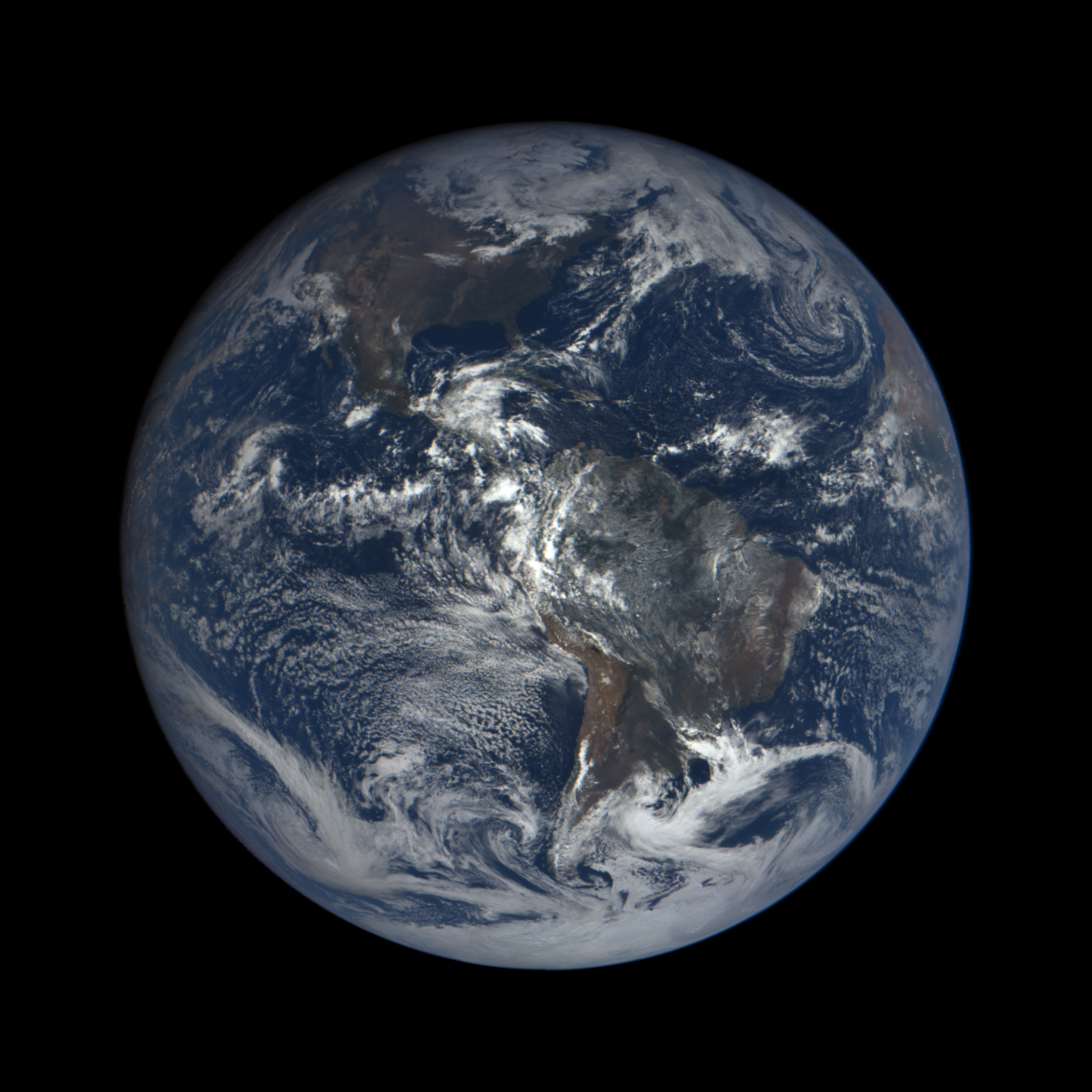
Earth
NASA continued in 2015 to develop new ways to observe and study Earth’s interconnected natural systems and share this unique knowledge with institutions around the world to gain new insights into how our planet is changing.
NASA launched in October a new website that brings the world to the world with new images every day of the sunlit side of the Earth, captured by a NASA camera on the Deep Space Climate Observatory (DSCOVR), approximately one million miles away.
About 71 percent of the Earth’s surface is covered with water, making the health of aquatic ecosystems a critical piece of the overall health of our planet. NASA uses the unique vantage point of space and cutting-edge technologies to study the world’s water, providing vital data. Earth scientists and engineers at NASA’s Glenn Research Center in Cleveland have been studying Lake Erie’s algal blooms for a number of years. But when drinking water was declared contaminated for half a million people in Toledo, NASA stepped up its investigation into the nature of the algal blooms to get answers.
The relationship between oceans and climate also was studied in depth in 2015. Over the summer, NASA released the results of a study of ocean temperature measurements that showed extra heat from greenhouse gases has been trapped in the waters of the Pacific and Indian oceans in recent years, accounting for the slowdown in the global surface temperature trend observed during the past decade.
Satellite measurements gathered by NASA and its partners revealed that seas around the world have risen an average of nearly three inches since 1992, with some locations rising more than 9 inches due to natural variation. An intensive research effort, aided by NASA observations and analysis, points to an unavoidable rise of several feet in the future. In November, NASA began research flights for an intensive, five-year investigation into ocean plankton, a tiny sea creature that has an enormous impact on Earth’s climate.
The Stratospheric Aerosol and Gas Experiment III on the International Space Station, or SAGE III on ISS, was shipped to Kennedy Space Center where it is scheduled to launch to the space station in 2016 aboard a SpaceX Falcon 9 rocket. SAGE III will give NASA a new way to monitor Earth’s protective ozone layer and document its ongoing recovery, helping scientists monitor the ozone layer’s gradually improving health.
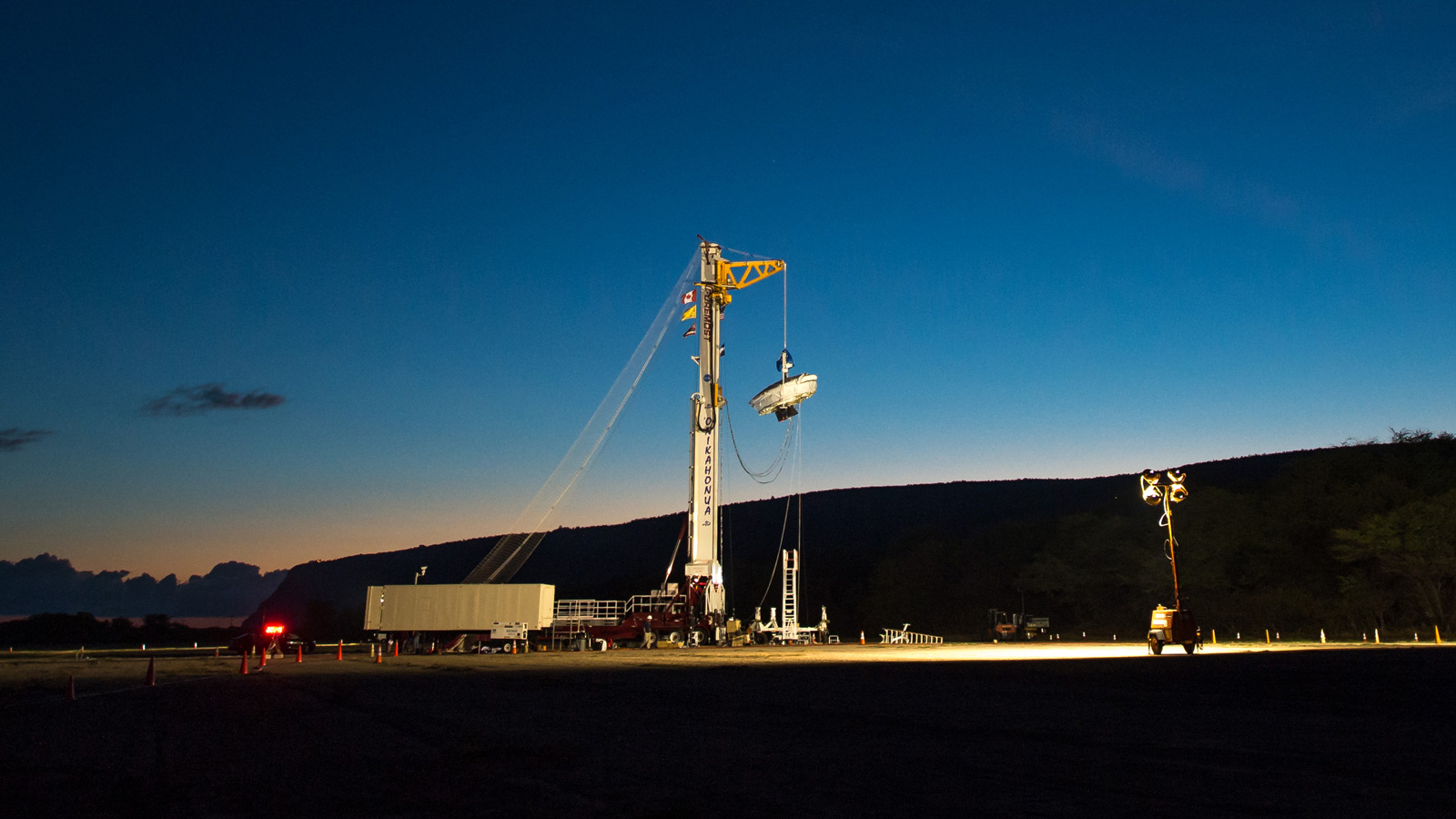
The saucer-shaped vehicle will test two devices for landing heavy payloads on Mars: an inflatable donut-shaped device and a supersonic parachute.
The launch tower helps link the vehicle to a balloon; once the balloon floats up, the vehicle is released from the tower and the balloon carries it to high altitudes. The vehicle’s rocket takes it to even higher altitudes, to the top of the stratosphere, where the supersonic test begins. Credits: NASA/Bill Ingalls
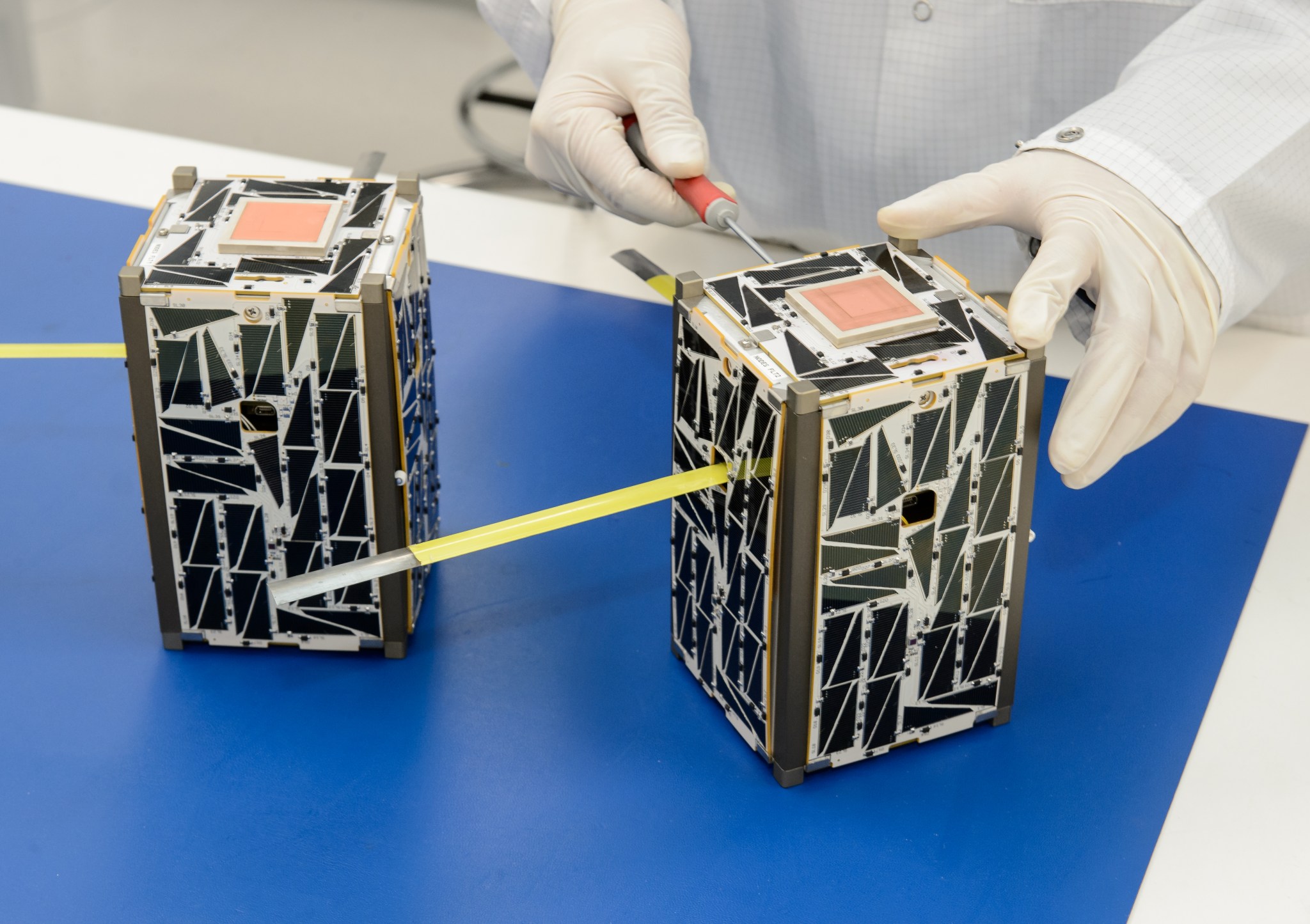
Technology
NASA wasted no time in 2015 advancing new technologies with the unveiling in January of its Integrated Structural Assembly of Advanced Composites (ISAAC) robotic arm used at NASA’s Langley Research Center in Hampton, Virginia, to develop lighter, stronger composite structures and materials for aerospace vehicles.
In June, the agency successfully conducted its second, full-scale flight test of its Low Density Supersonic Decelerator (LDSD), a cross-cutting demonstration mission for its rocket-powered, saucer-shaped vehicle. Following up on the 2014 test, this year’s flight served as a crucial milestone for proving two key technologies for landing future robotic and human missions on the surface of Mars.
NASA’s CubeSat Launch Initiative continued to provide opportunities for small satellite payloads to fly on rockets and to the space station. Two 4.5-pound satellites, launched in December to the International Space Station, will test networking technology critical to future operations of small satellite swarms. These Nodes small satellites will be deployed from the station into low-Earth orbit in early 2016.
NASA also made advances with its development of two technologies that could enable safer and more cost-effective space travel: solar electric propulsion (SEP), which also will be used for NASA’s Asteroid Redirect Mission, and two portable life support system technologies.
In a more earthly endeavor, NASA research into flexible, high-temperature space materials may someday improve personal fire shelter systems and help wildland firefighters better survive dangerous wildfires.
NASA also unveiled in 2015 Startup NASA, an initiative that offers start-up companies a diverse portfolio of more than 1,200 patented NASA technologies that range from materials and coatings to sensors, aeronautics technologies, instrumentation and more.
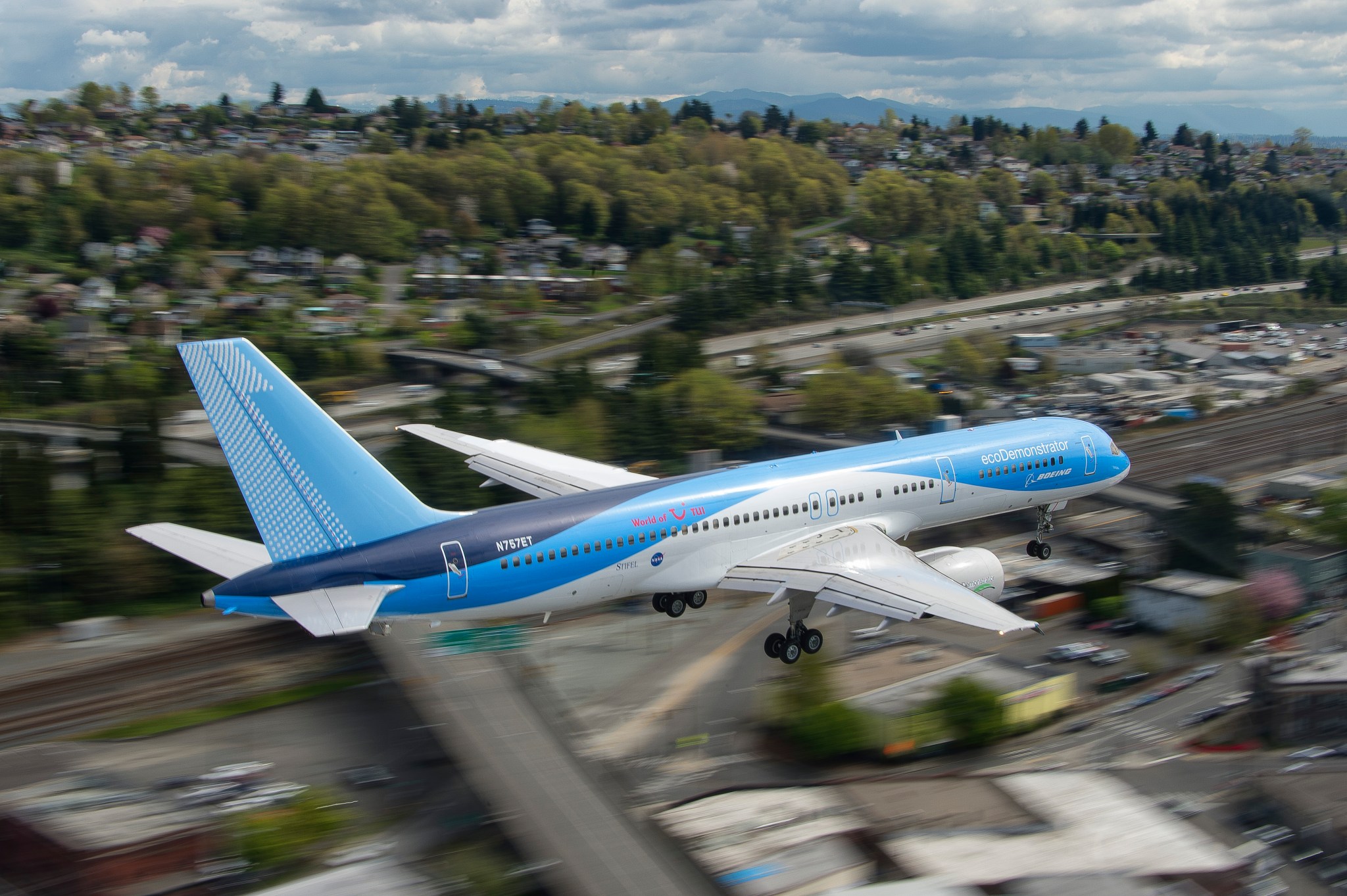
Aeronautics
NASA’s long aviation research heritage was marked in 2015 as the agency celebrated the 100th anniversary of the National Advisory Committee for Aeronautics, the organization from which NASA was created in 1958. NASA continued to build on this legacy throughout the year, making significant progress on studies into several technologies aimed at making aviation greener and safer.
NASA’s Environmental Responsible Aviation project concluded demonstrations of eight new technologies to reduce the environmental footprint of aviation through reduced aircraft drag, weight reduction from advanced composite materials, and advanced engines and airframe designs to reduce fuel consumption, emissions and noise. If adopted as an integrated suite, these technologies resulting from an unprecedented six-year effort with industry partners could result in a fuel savings of more than $250 billion by the year 2050. Two of these technologies — air nozzles on the vertical tail, which could potentially enable the ability to have smaller tails on future aircraft, and special wing coatings, which could reduce bug residue that contributes to drag — were flown aboard Boeing’s ecoDemonstrator 757 flying laboratory.
NASA continued to push the boundaries of aviation through NASA’s new Convergent Aeronautics Solutions project, exploring the feasibility of novel ideas that would potentially transform aviation as we know it. NASA launched studies of six revolutionary concepts, such as using an aircraft fuselage as a battery for electric propulsion, and equipping an Unmanned Aerial Vehicle with artificial intelligence that could respond to unforeseen situations the same way a human pilot would.
NASA concluded a multi-year effort with the U.S. Defense Department and industry partners. The goal was to develop and demonstrate new engine health management technologies that can improve performance of future aircraft, including aircraft encountering volcanic ash in flight. NASA also studied potentially hazardous icing conditions at high altitude, flying its DC-8 aircraft into tropical storms as part of the High Ice Water Content campaign.
NASA and its government and industry partners made significant progress this year investigating detect and avoid systems and command and control technologies that could enable routine access by full-size unmanned aircraft systems (UAS) into the national airspace. NASA also engaged with the aviation community to identify key challenges and research needs associated with smaller, low-altitude UAS, commonly called drones, and conducted a flight demonstration of initial concepts.
In April, NASA researchers completed initial flight-testing of a radically new morphing wing technology that has the potential to lower fuel costs, reduce drag and airframe weight, and decrease noise during takeoff and landing.
NASA researchers also continued studies with international partners to evaluate the potential environmental benefits of alternative, non-petroleum based aviation fuels.

Public Engagement
With an exciting and diverse mission that captivates audiences around the world, public engagement is a vital aspect of NASA’s work. Through events, including South by Southwest, the Essence Festival, World Science Festival and nationwide Earth Day activities, more than two million people had the chance to interact with representative of America’s space agency and more than 400 million people were reached through NASA’s use of social media during these events.
NASA’s award-winning website, NASA.gov, launched a major redesign in April that focuses on mission updates, images and videos in a layout that makes it easier for users to discover new content and works equally well across devices. The site’s customer satisfaction scores, consistently among the highest in government, rose substantially after the redesign, with October showing the highest user satisfaction level in three years. The site now averages more than a quarter-million visitors a day, up more than 25 percent from 2014, with an increase in new visitors and an audience that is increasingly mobile, social, and international.
NASA‘s award-winning social media presence also continued to soar in 2015. The agency’s Twitter, Facebook, Google+, and Instagram accounts are the most followed in the federal government on those platforms. This year, NASA also launched an official presence on Tumblr. The agency’s Twitter account broke into the top 100 Twitter accounts, by number of followers, the only government account to be on a list heavy with celebrities. NASA posted in July the agency’s most-liked image ever onto Instagram — Pluto from the New Horizons spacecraft — generating more than 363,000 likes. The agency also hosted 15 NASA Socials, bringing together more than 1,000 followers who engage with NASA via social media for unique in-person experiences of exploration and discovery.
Citizen Science, Prizes and Challenges
NASA provided in 2015 several avenues for public participation in the agency’s missions to explore and discover with citizen science activities and challenges posted to NASA Solve, including the agency’s first micro-tasking challenges through the NASA Tournament Lab. The agency also hosted the first Cube Quest Challenge Ground Tournament, students designed 3-D printed containers for the International Space Station and volunteers reached a milestone one million classifications of potential debris disks that might indicate developing planets around other stars.
STEM Education Collaboration
NASA continued its work with other federal agencies, industry partners and academia to provide to students and teachers throughout the United States unique and compelling opportunities in science, technology, engineering and math education. In addition to funding research at minority serving institutions, NASA’s Space Grant program supported science, technology, engineering and math (STEM) programs in schools in every state.
The agency also brought real space exploration experts from NASA and cast members of the movie “The Martian” together during a record-breaking NASA Digital Learning Network event called So You Want to Be a Martian, watched by more than 10,000 students and teachers.
The work NASA does, and will continue in 2016, helps the United States maintain its world leadership in space exploration and scientific discovery. The agency will continue investing in its journey to Mars, returning human spaceflight launches from American soil, fostering groundbreaking technology development, breakthroughs in aeronautics and bringing to every American the awe-inspiring discoveries and images captured by NASA’s missions in our solar system and beyond.
For more about NASA’s missions, research and discoveries, visit:
https://www.nasa.gov
-end-
David Weaver
Headquarters, Washington
202-358-1600
david.s.weaver@nasa.gov

























